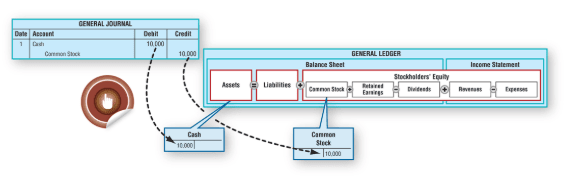
Church grants received from foundations or one-time donations from benefactors can be a significant source of revenue. (For example, someone donates money towards a new assets = liabilities + equity roof.) Document each grant or donation’s source, purpose, and conditions, and report on the fund spending. There are 3 essential types of software that every church should integrate into its church accounting toolbox.
My online training file
It will record income and expenses, reconcile bank accounts, and manage budgets. It will also provide a clear and organized view of your church’s financial health, which will help facilitate informed decision-making and ensure accurate financial reporting. This includes managing the day-to-day accounting activities, preparing financial reports, and providing strategic financial guidance to support the United Church of Canada’s Vision and Call. They work closely with various units to ensure efficient financial management and contribute to the overall financial health of the organization.
Church Chart Of Accounts Best Practices
Transparency is especially important in church environments where organizations count on their members’ support. Accurate accounting will back a straightforward system that promotes trust and a sense of community. Money coming in is designated as restricted and unrestricted funds. Unrestricted funds are used to cover necessary operating expenses like salaries, rent, and utilities.

Creating a Budget
For-profit entities have a general ledger (or a single self-balancing account), and churches have multiple general ledgers. These general ledgers go by “funds.” Funds Legal E-Billing let organizations separate resources into different accounts to identify the uses of those resources as well as where they came from. Since churches are tax-exempt, they have to keep detailed records while bookkeeping. Navigating tax-exempt status is a fundamental aspect of church financial management, offering significant advantages while imposing specific compliance obligations. To achieve and maintain tax-exempt status under Internal Revenue Code (IRC) Section 501(c)(3), churches must operate exclusively for religious, educational, or charitable purposes. This status exempts churches from federal income tax and often from state and local taxes, allowing more resources to be directed toward their mission.
- The best accounting method for your church depends on its size, complexity and financial goals.
- First, consider past income and expenses, tithing trends and ministry goals.
- Creating a financial plan that spans multiple years ensures strategic growth.
- Money coming in is designated as restricted and unrestricted funds.
- Include both fixed and variable costs to ensure complete coverage.

You don’t want the same person writing the checks to be reconciling your accounts. Churches can choose from many affordable online options, including QuickBooks, Aplos, Accufund, and more. If you’re using Donorbox for church fundraising, managing your finances is a breeze with Donorbox’s powerful integration with QuickBooks. If you are a larger church with significant staff and budgets, hiring an church accounting accountant for a staff position may be a better option.
- While it can be daunting, church accounting is a necessary step to build trust with your congregants and community while adhering to all IRS guidelines for churches.
- By following church accounting guidelines and tools, managing your church’s finances brings many benefits and can be straightforward and transparent.
- I have found the best way to go about this is to work alongside our amazing church finance committee.
- Now that you have created your chart of accounts, you can use it to record your data, generate reports, and keep track of the finances of the church.
General tools just won’t cut it- You need true fund accounting
- Many churches follow Generally Accepted Accounting Principles (GAAP) to ensure consistency and reliability in their reporting.
- If thinking about church accounting makes you feel a little lost, don’t worry – you’re not alone!
- On the expenditure side, categorizing expenses into fixed and variable costs supports better cash flow management.
- Churches operate based on a mission to serve their community and fulfill the vision and values that the church and leadership have prayed into.
- Understanding the fundamental documents involved in church accounting will help maintain your financial records effectively.
Fund accounting helps churches determine where their money is going. It restricts certain assets and ensures they have enough money to cover operational expenses. Just like any organization, churches require reliable bookkeeping and accounting systems. They need someone to keep track of expenses, and how much money comes in through fundraising and other channels. Without a strong system in place, churches could end up facing fines and penalties and may deal with general financial disorganizations.

Implementing Software
These organizations must also maintain accurate records, file annual information returns with the Canada Revenue Agency (CRA), and ensure proper handling of restricted funds. Compliance with these regulations ensures transparency, accountability, and proper financial management within the sector. Church accounting is the specialized system of financial management and reporting designed to meet the unique needs of religious organizations. Unlike businesses that focus on profit, churches have different goals and requirements, such as tracking donations, managing funds for various ministries, and complying with tax exemptions. Understanding church accounting is crucial for maintaining financial integrity and transparency, which in turn fosters trust within the community.
Non-clergy staff are subject to standard withholding for federal and state taxes, Social Security, and Medicare. A robust payroll system that tracks hours, calculates withholdings, and generates detailed pay stubs can help prevent payroll errors and ensure compliance. Managing payroll and compensation in churches requires compliance with both labor laws and church-specific guidelines.
How To Set Up A Church Chart Of Accounts
It’s imperative financial professionals understand the current GAAP rules and any changes that happen throughout the years. Your organization’s budget is free to evolve the further into the year you get, so don’t feel like you have to remain rigid with your initial plan. It’s important for those in charge to be aware of upcoming plans and initiatives, as they may need to approve increases to the budget. Nine times out of 10, people can trust those in their organization, but you still want to implement safety measures just in case.
